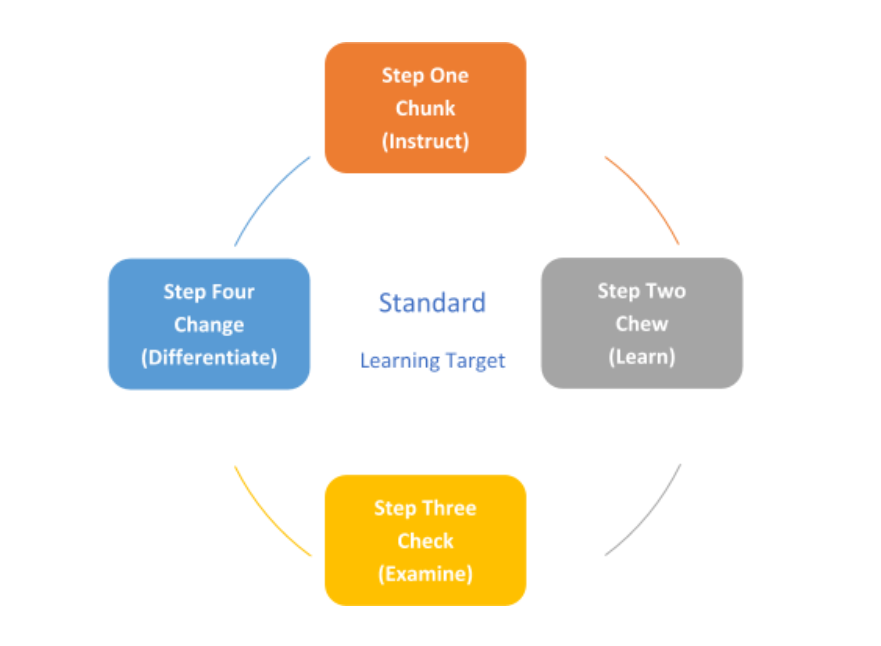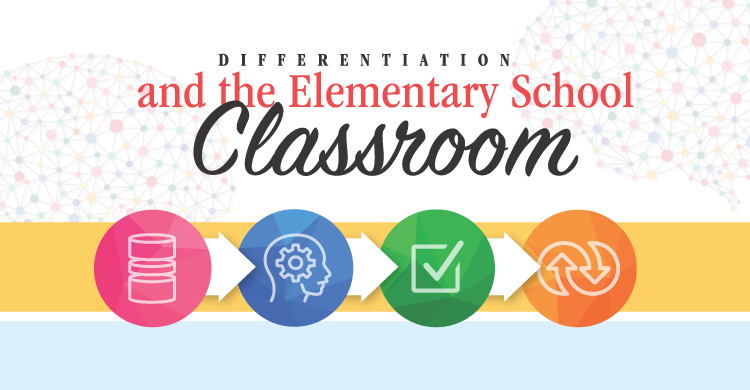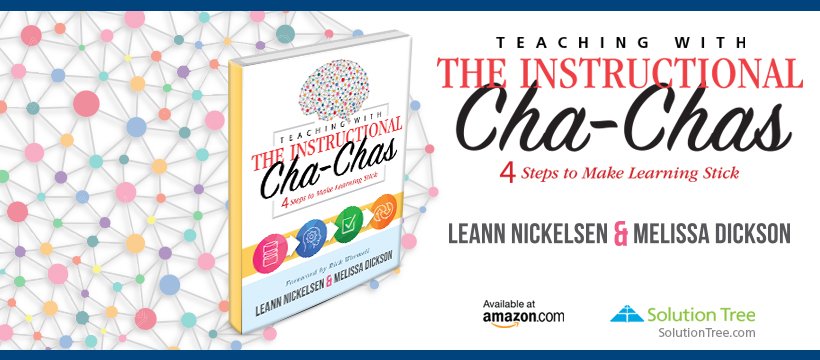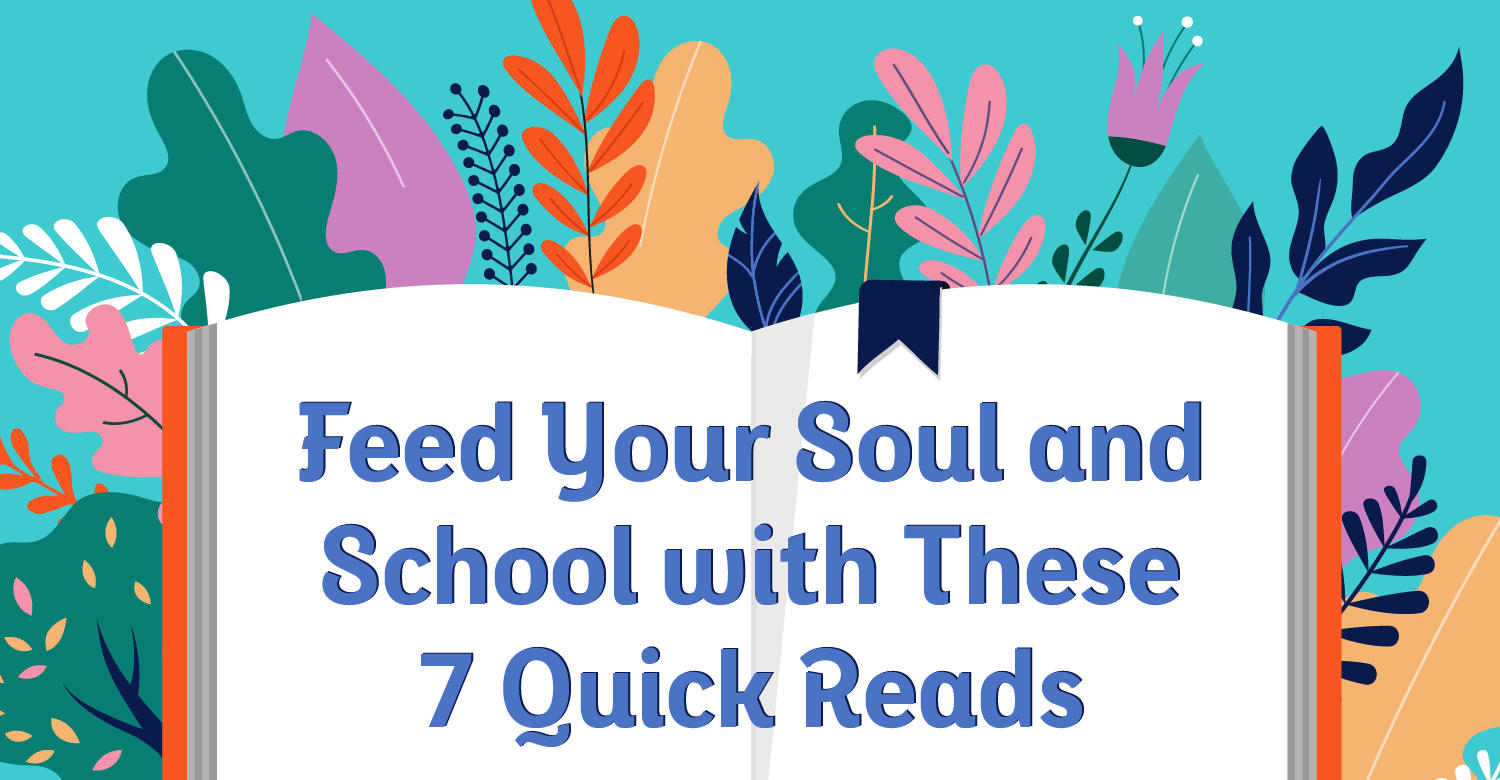Based on Teaching With the Instructional Cha-Chas: 4 Steps to Make Learning Stick
In a nutshell, differentiated instruction is meeting the unique and diverse needs of your students so they are successful in reaching the standards. It’s a concept based on a mindset that all students can improve their skills and understanding to achieve the daily learning target and eventually the standard—it just might take more time, different tools, and/or more teacher support.
Students may not arrive at those goals on the same day or in the same way. Teachers evaluate the data to determine what to do next and then respond with powerful feedback and by differentiating the instruction. One differentiation technique might be to provide texts at the students’ instructional level, so they can better comprehend the material. Another technique might be to preteach a set of vocabulary words before a science lesson for the EL students, so they can be more successful during a lab activity. Yet another differentiation technique might be looking at daily data, evaluating it to determine the accuracy of thinking or misconceptions that occurred, and then responding by pulling a small group of struggling students together to reteach it. The goal is to use as many tools and strategies, based on the students’ strengths, to close the learning gap as quickly and efficiently as possible, so students can truly say “I got it!”
In our book, Teaching with The Instructional Cha-Chas, we have taken the formative assessment process and added what we’ve learned about cognitive science and differentiation to develop the planning frame and four steps for successful instruction.

Notice that all four steps of the instructional cycle revolve around the standard or daily learning target. Achieving the daily learning target and reaching the standard is the Notice that all four steps of the instructional cycle revolve around the standard or daily learning target. Achieving the daily learning target and reaching the standard is the goal of every lesson.
Recognizing Each Step of the Instructional Cha-Chas
In the following scenario, we have identified how each step of the Instructional Cha-Cha fits into an elementary classroom lesson on main idea.
| Ms. Jones’s students are learning to recognize main ideas in informational text. After defining main idea and details, showing an image and movement to enhance the memory of this concept, Ms. Jones begins by reading aloud the first paragraph from the text and uses the think-aloud process to show students how she determined the main idea of the paragraph (Chunk—using an “I Do”).
Next, she reads out loud the second paragraph and has students discuss in teams what they believe the main idea to be (Chunk—using a “We Do and Students Chew”). She selects a student from each team to share their thinking (Check). She notices that one table has had trouble identifying the main idea (Examine the results of the Check), so after reading aloud the third paragraph (Chunk), she joins this group during the discussion, helping them to identify the main idea (she made a “right-now Change” to join the struggling group and provide more support), before asking teams to share their thinking (Check). She realizes that three students in the group are still having difficulty (examine the results of the Check), so she regroups the rest of the students into partners to complete the remaining paragraphs of the text, while she works with the three struggling students, using a less complex text. (She made another “right-now Change” by regrouping students and changing the text for the three struggling students.) She asks the partners to record their main ideas on their paper and turn them as their exit ticket (Check). Based on the results of the exit ticket, Ms. Jones plans the next day’s lesson (examine the results of the Check), where she will regroup the students. Two groups will create their own mini-informational paragraph and then challenge the other team to find their main idea. Two other groups will be reading texts at different levels of complexity and identifying main ideas. (She made a “near-future Change” by designing a tiered activity for the following day.) |
Differentiating in Each Step of the Instructional Cha-Cha
Teachers can differentiate in each step of the Instructional Cha-Chas. For example:
Chunk—the delivery of the content
- Pacing: shorter chunks for more challenging material
- Methodologies: video clips, inquiry, lecture, reading, etc.
Chew—how students process the content
- Grouping: whole-group, small-group, partners, one-on-one
- Methodologies: reciprocal teaching, graphic organizers, mindmaps, etc.
Check—examining evidence of student mastery
- Short and Sweet Checks: thumbs up/down, whiteboard response, question/answer, exit tickets, etc.
- Long and Deep Checks: Stop-Think-Write, essay response, projects, presentations, etc.
Change—more purposeful differentiation based on data
- Right-Now Changes: feedback, pacing, grouping, strategy change, etc.
- Near-Future Changes: preteach, reteach, tiered, assignments, learning stations, etc.
Planning a Differentiated Lesson in an Elementary Classroom
There is no one “right” way to differentiate for your students. The following is just one example of how a teacher might plan to differentiate a writing assignment.
| Standard: Write informative/explanatory texts in which they introduce a topic, use facts and definitions to develop points, and provide a concluding statement or section.
Learning Target: I can paraphrase information about my animal’s habitat. Criteria for Success: (The teacher chose to use a checklist to help students know whether they met the expectations)
Beginning Chunk (“I do”—Teacher Models): Teacher reads to the students from a book on animals and models how to determine interesting facts, paraphrase them, and write them on a fact strip. (Teacher chooses to use grade-level text during the modeling to expose students to the level they will be expected to be able to read and comprehend by the end of the year on their state exam.) Middle Chunk (“We do”—Guided Practice): As the teacher continues the reading, the students are asked to turn and talk about what they would write on fact strip. In small groups, students share out their facts that they paraphrased. Peers give feedback such as: “Does it sound paraphrased? Does this fit in the habitat section?” (Teacher is still supporting struggling students with the grade-level text by providing the oral reading and has chosen to group them heterogeneously for peer support.) Middle Chunk (“Two do”—Student Collaboration and Cooperation): Student groups are assigned different animals to read about and practice paraphrasing important facts. (Students are placed in heterogeneous groups based on reading readiness and are given text at their independent reading level to ensure they can access the information. The teacher has a graphic organizer ready to provide to groups who might struggle with organizing the information.) End Chunk (“You do”—Independent Practice): Each student uses the facts gathered to write his or her own informational text about their animal and its habitat. (Teacher pulls a small group of struggling students to help them with their introduction, transitions, and conclusion.) |
Know your specifics
Remember, the goal is to set the students up for success in learning. To do this, you must know your standards and district curriculum, as well as information about your students. Then, you create daily learning targets to support your students in taking little steps toward the gigantic standard. You determine what the students will do, say, make, or write to show their achievement toward the learning target. You create the criteria for success so that students know exactly what they are doing to show what they know. This evidence, along with other pieces of evidence, is what will drive your instruction. Effective teachers know their standards and their students and plan their chunks, chews, checks, and changes.
And that is how the Instructional Cha-Chas help you to design a successful classroom dance!
[author_bio id=”232″]
[author_bio id=”1955″]







